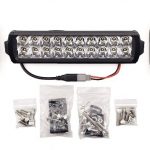As I write this we are approaching the middle of March 2020. And for experienced gardeners, you know what that means. It’s time again to focus on the lawn.
Here is a “to do” list for lawn care through the rest of March.
• Minimize worm casting in your lawn before mowing.
• If there is moss on the lawn, treat it with a Ferrous Sulphate based product.
• Aerate
• Light mowing
• Turf work
Minimizing Worm Castings
Although a good thing for the soil, worms come to the surface in winter and leave muddy casts that can cause problems when mowing in spring. Spread a little Ferrous Sulphate on the lawn to reduce the castings.
Other pests and diseases you should start to combat include ‘snow mold.” The mold appears in the lawn as a result of melting snow or when the weather is moist and mild for a decent period of time.
Also called Fusarium; snow mold can also signify poor turf health, high thatch levels, poor air circulation, compaction or persistent wet conditions. You probably can’t do much about this now, but you can prepare for next year by looking for possible causes. Read this article to get a leg up in treating the problem.
Powder mildew can also be a problem during this time of the year in shady areas of your lawn. Powder mildew appears like white wash on the leaves of the grass. Inspect your lawn for this substance. Relieve the issue with ideas you will find here.
Treating Moss
There’s a chance that the weather will be cold through March in some regions of the country, if that’s so in your area, then hold off with a moss removal program. The effort will be useless until it warms up. If your corner of the country has been warm for a while, then consider spreading ferrous sulphate to kill the moss. Once that’s done, rake out the dead moss. Treat the moss with the ferrous sulphate about the middle of March or early April, then rake out the dead moss one to two weeks later. It’s okay to rake moss in early May, but be sure there’s enough ground moisture present so that the grass can recover.
Following moss removal, over seed bare spots in your lawn with the proper grass seed and assist growth with fertilizer.
Aerate
Use a garden fork or hollow tine fork to aerate heavy traffic areas and other firm areas of your lawn. Do this when you’re sure your region has experienced its last frost.
Aerate the whole lawn using solid spikes beginning in the middle of March and beyond. Aerator shoes or a rolling aerator can also be used for this project.

(Public Domain)
Light Mowing
This is also a good time to do light mowing. Light mowing is simply tidying up. Set the mower to cut high so that only the very top of the grass blades is cut.
You can also take this time to sharpen the mower blades to assure a proper cut. If you don’t trust yourself to perform this activity, then take the mower to a nearby mower shop and ask them to do it.
Turf Work
Turf work refers to heavy lawn work including aeration, scarifying, repairing and renovating. We’ve already covered aerating, so let’s discuss the other elements of turf work.
It’s probably best to wait to scarify a little while so that the moisture in the ground can evaporate a bit. If the surface of the lawn is too wet, then scarifying and racking could cause the soil to smear and seal preventing air from getting to the roots of the grass when growing season begins.
Make sure you perform repairs and renovations on your lawn while it isn’t too wet or soft. If the ground is firm, then re-cutting edges and doing repairs should be okay.
(Source: lawnsmith.co.uk)






